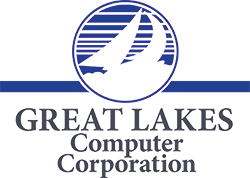[vc_row][vc_column][vc_column_text]
Network server backup for complicated, special cases
 Backing up the servers on a network is most often a straightforward process, particularly if the SMB involved has invested in a high-quality network server backup software suite. However, some businesses are using a data security arrangement that involves clustered servers. This can complicate matters somewhat.
Backing up the servers on a network is most often a straightforward process, particularly if the SMB involved has invested in a high-quality network server backup software suite. However, some businesses are using a data security arrangement that involves clustered servers. This can complicate matters somewhat.
What are clustered servers?
A clustered server, also known simply as a cluster, is a system in which several different physical servers act in concert, behaving, in effect, as would a single server. In such a system, the physical servers involved are usually referred to as “nodes” and the term “server” comes to mean the entire cluster of nodes. Because such arrangements are often set up in order to provide additional data security in case of a system failure, they sometimes go by the name of “failover clusters.”
Several different types of clusters exist, and the exact backup procedures needed may vary for each one. One common arrangement for a clustered server is to set it up in a configuration known as CCR, or Cluster Continuous Replication. This can be done by using a Windows Server Majority Node Set cluster host software such as Microsoft Exchange 2007, Server Version.
A mail server that has been arranged on a clustered basis can be simple or complex. The simplest incarnation of such a system involves only two nodes: one active and one passive. As the terminology suggests, only the active node is in regular use. The passive node in such a system functions as a type of spare. In the CCR arrangement discussed above, Exchange 2007 would routinely copy information such as transaction logs over to the passive node. This would serve to create a continuously updated backup body of the active node. In the event of an active node failure, therefore, the passive node would contain all data lost, which would make data recovery relatively fast and easy.
Network server backup in a clustered environment
Since the active and passive nodes are essentially identical in this example, it would seem to be a waste of SMB resources to back them both up. Indeed, the recommendation from Microsoft is that the passive node alone be backed up. Trying to back up the active node, it turns out, can disrupt normal data operations since it is this node that is reading and writing most frequently. The passive node, in contrast, can be backed up without interrupting normal Exchange Server activity.
However, it is best to accomplish network server backup in such an environment using a software package that is “cluster-aware.” This is because if the system performs a failover, the active and passive nodes will switch roles. This may not be immediately apparent to the end user, but the right software suite will be able to detect the switch and continue backing up the correct node.
Dell AppAssure #1 Backup for VM, Physical and Cloud
AppAssure is the #1 unified backup and replication product that offers data protection for VM, physical and cloud IT environments. Our server backup software has already won 10 major technology industry awards including Gold award in Backup category as well as Gold award in the Disaster Recovery category from Windows IT Pro magazine and also the ISV Winner in Backup category from Virtualization Review Magazine for 2012.
[/vc_column_text][/vc_column][/vc_row]
